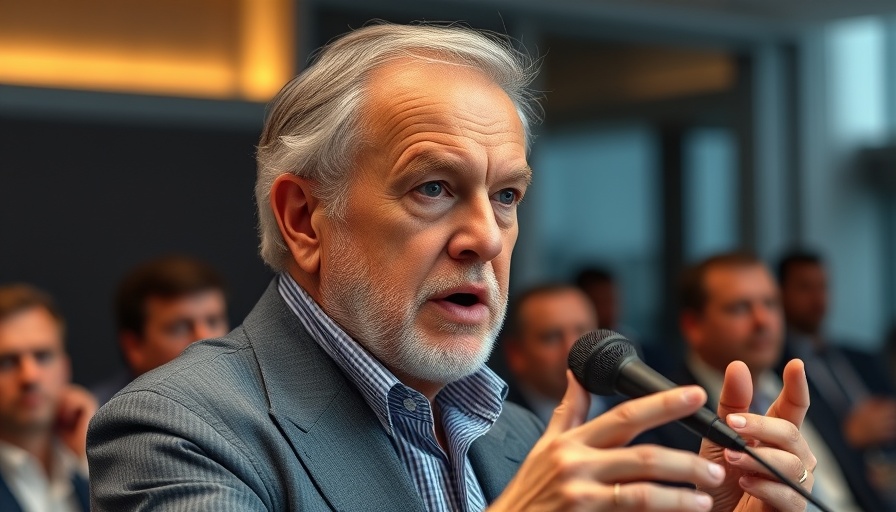
Canada's Commitment to Defence Spending in the Current Global Landscape
According to recent statements by Defence Minister David McGuinty, Canada is undertaking a comprehensive review of its defence spending. This comes amid increasing pressure from NATO allies to bolster military budgets, aiming for levels not seen since the Cold War. As Minister McGuinty emphasized during his visit to NATO headquarters in Brussels, the review encompasses all expenditures across the board.
Canada's current defence strategy reflects a critical juncture in international relations, where the geopolitical landscape is increasingly influenced by tensions stemming from conflicts in Eastern Europe and the Pacific. "We are revisiting all of our expenditures presently, from top to bottom," McGuinty stated, illustrating the seriousness with which Canada is approaching its obligations to NATO.
Understanding NATO’s New Spending Targets
As NATO gears up for an upcoming leaders’ summit, member nations are expected to endorse increased spending commitments. The proposed spending target is notably ambitious—5% of each member’s GDP on defence. This kind of commitment wouldn’t just involve reassessing budget allocations but could also usher in significant legislative changes to facilitate such expenditures.
Part of this discussion involves generating capability targets, essentially a strategic shopping list that identifies the military equipment and resources required by member states. These targets include essential items such as air and missile defence systems, artillery, ammunition, and drones. Each nation is looking to align its military capabilities with the modern demands of conflict, which have evolved considerably in the last few decades.
The Urgent Need for Military Modernization
With Russia's military actions in Ukraine and increased assertiveness in global conflict, NATO's focus on military preparedness is clearer now than ever. Canada recently announced a landmark $6 billion initiative to enhance security in the Arctic, recognizing the strategic importance of this region amidst global climate change and lingering geopolitical rivalries.
This funding initiative aligns with NATO’s overarching vision of collective defence and deterrence strategies. The Arctic has, in essence, transformed into a new frontier for military strategy, compelling Canada to take proactive measures to ensure national and allied security.
Potential Implications for Canada’s Defence Industry
A boost in defence spending and modernization could yield substantial implications for Canada’s defence industry. Increased procurement of military assets not only demands an injection of funds but could also translate into job creation and economic stimulation within this sector. Furthermore, there's a strong likelihood of technological partnerships with allies that could catalyze innovation within local industries.
However, the challenge will be to ensure that these expenditures are not just short-term fixes, but rather investments that build long-term capabilities. Canadian Defence Ministry officials stress that maintaining a balance between immediate requirements and long-term strategic goals is crucial.
Reflection on Public Sentiment and Support for Defence Spending
The Canadian public's view on increased defence spending is a complex issue. While there is a call for stronger national security, particularly in the wake of international conflicts, some citizens express concerns about reallocating budgets that could otherwise support public services such as healthcare and education.
As discussions progress, it will be important for the Canadian government to engage with its citizenry on these issues. Public forums and consultations could play a integral role in fostering transparency about where and how defence budgets are allocated, and what that means for local communities. Balancing national security with domestic needs is pivotal for garnering public support.
Future Predictions: The Path Ahead for Canada in NATO
As Canada reviews its defence priorities, the outcomes of these discussions and decisions will be scrutinized both domestically and internationally. The urgency for increased military readiness does not only rest on rhetoric but on tangible actions and commitments that Canada is willing to take.
In essence, what the Canadian government decides in terms of defence spending will signal its position within NATO and the wider global geopolitical landscape. With a leaders’ summit on the horizon, it will be crucial for Canada to delineate its commitment not just to NATO principles but to the expectations of its allies.
In conclusion, as Canada fortifies its defence production and engages with NATO’s evolving demands, the strategic implications of these changes will resonate long into the future, shaping national policy and influencing global relations.
 Add Row
Add Row  Add
Add 




 Add Row
Add Row  Add
Add 

Write A Comment